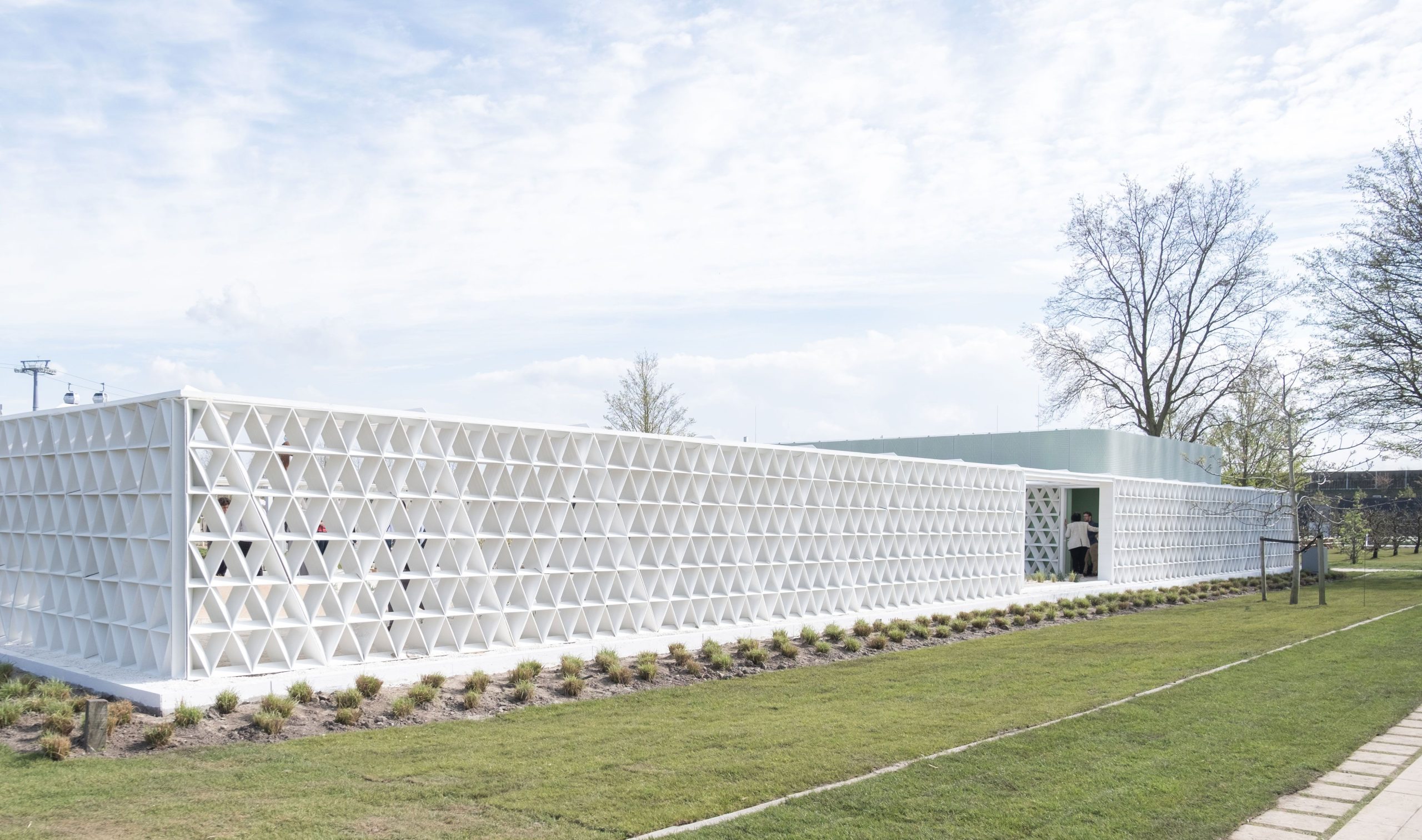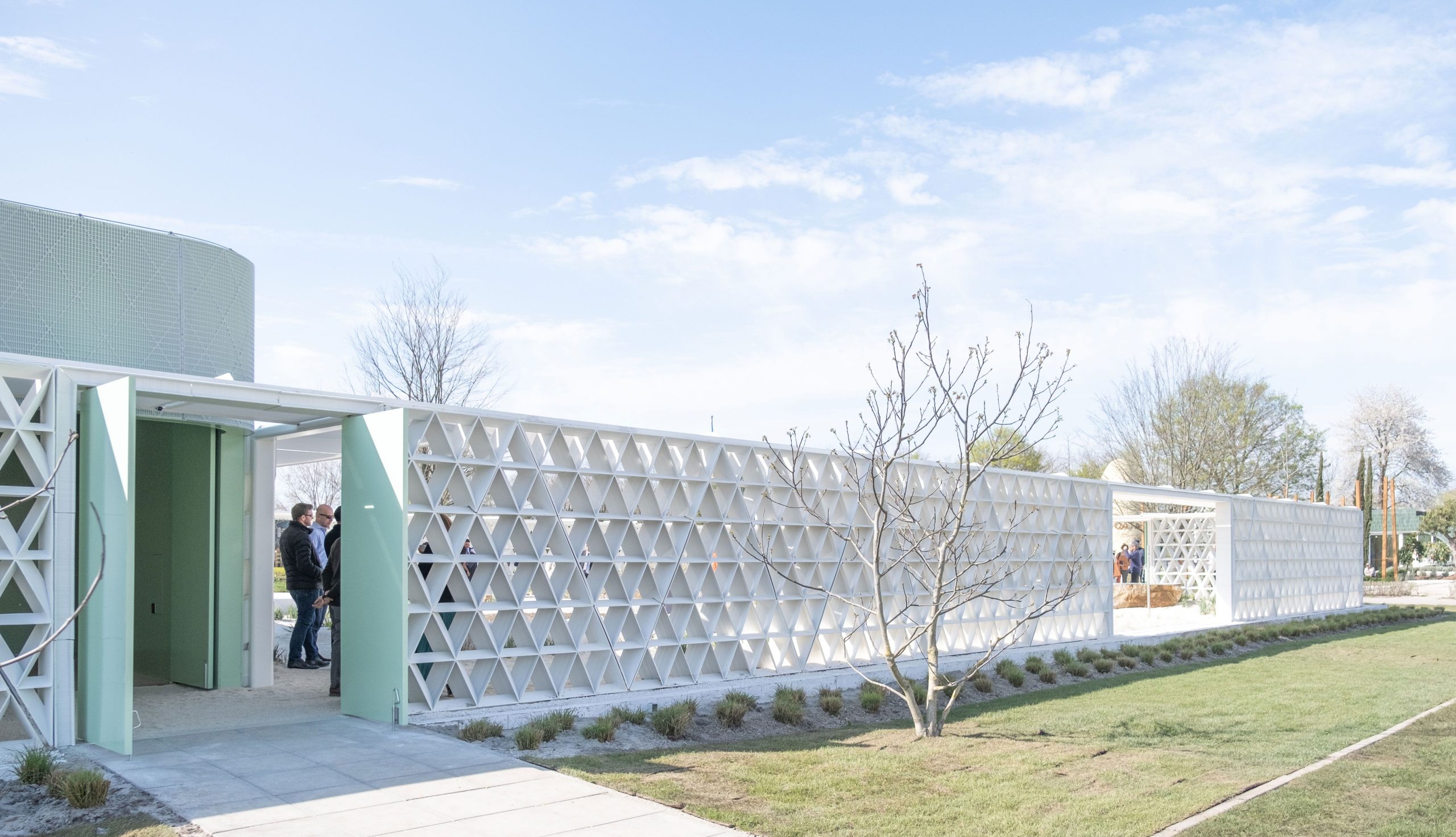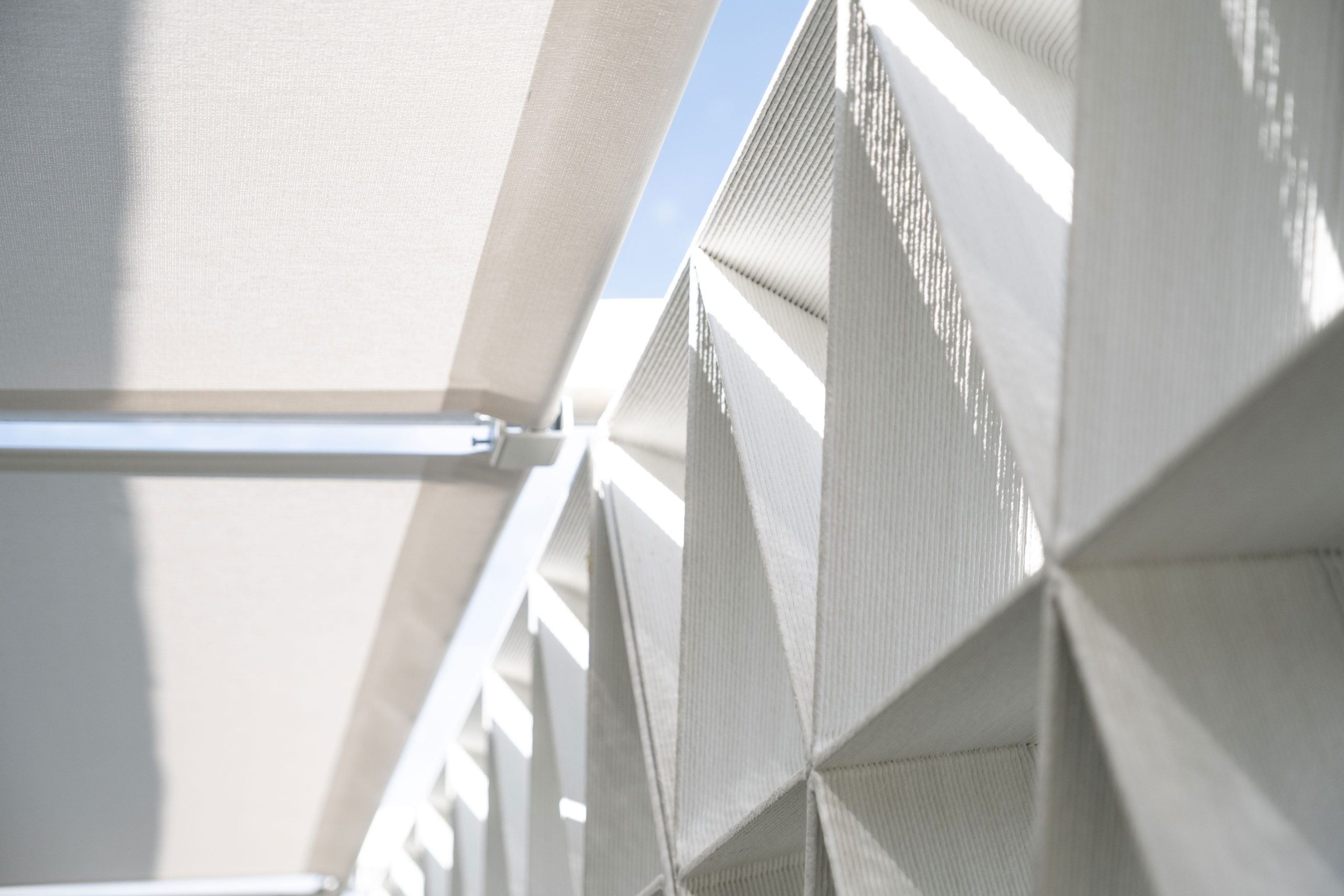Dutch sustainable architecture firm Aectual and UAE-based architecture studio Pragma have worked together to fabricate a 3D printed recyclable pavilion for the Floriade Expo 2022 in The Netherlands.
Spanning 8,880 square feet, the UAE Pavilion contains 3D printed facades and perimeter walls that can be recycled and re-printed after use, and which reflect the claustra pattern, a typical architectural feature seen within urban environments in the UAE. The pavilion will be on show at the exhibition until its conclusion in October.
“The claustra wall that defines the perimeter of the garden was integral in delivering an immersive experience of a very specific type of landscape in the UAE pavilion,” said Ahmed Khadier, Co-founder and Principal of Pragma. “We wanted to capitalize on the inherent qualities of 3D printing as a construction method that promotes a transition to a more circular way of making buildings and cities of the future.
“This collaboration with Aectual’s team and reliance on their recyclable 3D printing approach allowed us to achieve a modern and elegant aesthetic that blends tradition with innovation in a sustainable production method.”

Aectual’s architectural 3D printing aims
Aectual was founded in 2017 with the goal of making customized architecture more sustainable and accessible for designers and consumers alike. The company’s construction additive manufacturing technology is centered around four robot arm-mounted 3D printers capable of printing over a 500 square foot area with a range of 360°.
Aectual’s construction process is compatible with an eco-friendly linseed-based bioplastic developed in partnership with Henkel, which can be recycled up to seven times. As a result, the material is far less wasteful than many conventional building materials.
The company’s construction 3D printing technology has been deployed to fabricate a number of large-scale proof-of-concept structures, the first of which was a sustainable 3D printed floor for Amsterdam’s Schiphol airport. Since then, Aectual has leveraged its technology to fabricate a bespoke range of floors at the Salone del Mobile in Milan, and has reportedly been commissioned for projects by the likes of Nike, Burberry and Disney.
Last year, the firm doubled down on its efforts to better reach the consumer market, launching the beta of an on-demand architectural 3D printing platform at CES 2021, alongside a limited edition range of recycled 3D printed mussel-shaped plant holders.

The 3D printed UAE Pavilion
According to Aectual and Pragma, the co-developed UAE pavilion is one of the largest featuring 3D printed facades and perimeter walls, and stands out from other examples as it is fully recyclable and re-printable.
Pragma designed the 8,880 square foot pavilion which is surrounded by an expansive 3D printed claustra wall. Historically found in urban environments within the UAE, claustra walls are designed to create privacy while simultaneously allowing air to flow through as natural ventilation. The firm turned to Aectual to bring to life a modern 3D printed take on the traditional wall design for the pavilion.
The partners developed intricate triangular-shaped 3D printed blocks that fit together “like an immense jigsaw puzzle” to create a translucent wall within which a courtyard and building are situated. The building itself is clad in Aectual’s 3D printed Weave panels, which are green, lightweight, and flexible panels 3D printed in plant-based plastic that exhibit a woven appearance.
According to Pragma and Aectual, 3D printing proved to be the most sustainable and aesthetic way to fabricate the design, with all panels designed in Dubai and manufactured locally in Amsterdam. As a result, the transportation of building products was significantly reduced while Aectual’s 3D printing technology meant zero waste was created during the manufacturing process.
Generally, the firm’s technology claims to enable an 80 percent reduction in CO2 compared to conventional construction techniques. However, the biggest sustainability driver of the project is that all of the 3D printed parts used in the pavilion can be shredded after use and re-printed into new products. This, the firms say, makes the building of the pavilion 100 percent circular.
“Large-scale industrial 3D printing is coming of age,” said Hans Vermeulen, CEO of Aectual. “This project demonstrates beautifully how our digital design algorithms give designers flexibility in tailored design and on-demand production.”
The Floriade Expo is a leading exhibition and garden festival that takes place in the Netherlands once a decade, and this year’s central theme is “Growing Green Cities.” The 3D printed UAE pavilion is titled “Salt Water Cities: where land meets sea” and is designed to offer a multi-sensory experience to visitors regarding the challenges of the UAE’s location amidst desert and sea.

More sustainable construction
The sustainability advantages of 3D printing for construction are being increasingly realized as new additive manufacturing methods and materials are developed for the sector. In fact, the technology has already been deployed for the fabrication of homes, schools, public parks, and other commercial buildings in a more environmentally-minded approach to construction.
One firm that has been pioneering the development of sustainable architectures using 3D printing for a while now is WASP. The firm has previously used local earth and other natural materials to 3D print its Gaia eco house and TECLA eco-friendly housing model, while its printers have more recently been used by the likes of Dassault Systemes and architect Arthur Mamou-Mani to showcase the possibilities of sustainable design with additive manufacturing.
Elsewhere, Azure Printed Homes is using recycled plastic to 3D print backyard studios and housing developments, and Blast Studio has built a living architectural building column out of mycelium using 3D printing.
Subscribe to the 3D Printing Industry newsletter for the latest news in additive manufacturing. You can also stay connected by following us on Twitter and liking us on Facebook.
Looking for a career in additive manufacturing? Visit 3D Printing Jobs for a selection of roles in the industry.
Subscribe to our YouTube channel for the latest 3D printing video shorts, reviews, and webinar replays.
Featured image shows the 3D printed UAE pavilion at Floriade Expo 2022. Photo via Aectual.



